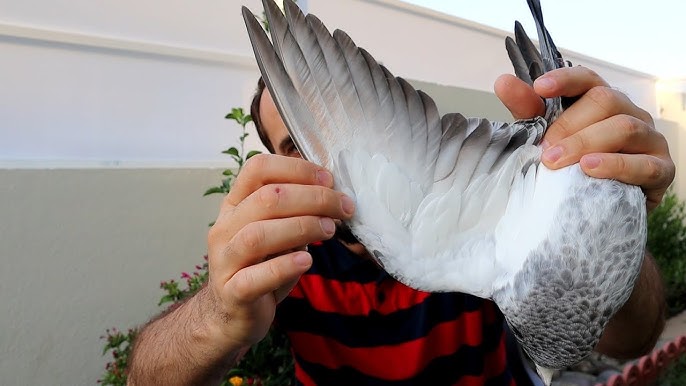The Art and Technique of Pigeon Feather Plucking: A Comprehensive Guide
Pigeon keeping, or squab farming, has gained traction in various cultures around the world, serving not only as a source of companionship but also as a sustainable food resource. Among the many aspects of raising pigeons, the technique of feather plucking, often referred to as “pigeon harvesting” in the culinary world, is one that is crucial for maintaining the health of the birds and optimizing the quality of the meat. This article delves into the methodologies, ethical considerations, and culinary implications of pigeon feather plucking, providing a comprehensive understanding of this practice.
Historical Context
The domestication of pigeons can be traced back thousands of years. Pigeons have been utilized for various purposes, including messenger services, sport, and food. Ancient civilizations, including the Egyptians, Greeks, and Romans, prized pigeons for their nutritional value and the unique texture of their meat. Feather plucking, in this context, has historically been a necessary process for preparing the birds for consumption. Today, this practice continues in many cultures, particularly in regions where squab is a delicacy.
Understanding Pigeon Anatomy and Feather Structure
Before discussing the methods of feather plucking, it is essential to understand pigeon anatomy and the role feathers play in their overall health. Feathers are composed of a protein called keratin and are integral to a pigeon’s ability to regulate temperature, maintain balance during flight, and protect the skin from environmental factors.
Feathers are categorized into several types:
- Contour Feathers: These feathers cover the body and provide shape and insulation.
- Down Feathers: Located beneath the contour feathers, these provide insulation.
- Flight Feathers: Found on the wings and tail, these are crucial for flight.
- Coverts: Small feathers that lie over the flight feathers, aiding in aerodynamics.
Understanding these distinctions is vital when considering which feathers can be plucked without harming the bird’s health and functionality.
Ethical Considerations
The ethics of feather plucking and animal husbandry are pivotal in any discussion surrounding animal agriculture. When harvesting feathers, it is crucial to ensure that the process is humane and does not inflict unnecessary pain or stress on the birds. Best practices include:
- Harvesting at the Right Time: Feathers should be plucked when the bird is in a calm state, ideally after feeding.
- Limitations on Plucking: Only pluck feathers that are not essential for the bird’s mobility and survival, especially during the molting season when birds are naturally losing feathers.
- Proper Handling Techniques: Gentle handling reduces stress on the animal and promotes a better overall experience.
Methods of Feather Plucking
There are two primary methods for feather plucking: manual and mechanical. Each method has its pros and cons, depending on the scale of operation and desired outcomes.
Manual Plucking
Manual plucking involves using one’s hands to remove feathers. This method is often preferred in smaller operations and can be more humane if done correctly. The process is as follows:
- Preparation: Ensure the bird is calm, perhaps by gently stroking it or placing it in a quiet area.
- Technique:
- Grasp the feather near the base, taking care to avoid pulling on the skin.
- Give a quick, firm tug to remove the feather without causing harm.
- Pluck feathers in small sections to avoid overwhelming the bird.
- Post-Plucking Care: After plucking, check the bird for any signs of injury and ensure it is comfortable.
Mechanical Plucking
In larger operations, mechanical plucking may be utilized to improve efficiency. Machines designed for feather plucking can quickly remove feathers from multiple birds at once. The mechanical plucking process involves:
- Preparation of Equipment: Machines should be well-maintained to avoid injury to the birds.
- Processing: Birds are placed in the machine, which uses rubber fingers or similar mechanisms to gently pull feathers from the body.
- Post-Processing Care: Similar to manual plucking, birds should be checked for injuries and kept in a comfortable environment.
Culinary Implications of Feather Plucking
The significance of feather plucking extends beyond animal husbandry; it has direct implications for culinary practices. Pigeon meat, often referred to as squab, is a delicacy in various cuisines worldwide, prized for its tenderness and rich flavor. Proper plucking techniques ensure the quality of the meat is maintained.
Preparing Squab for Cooking
Once plucking is complete, the following steps should be followed to prepare the pigeon for cooking:
- Cleaning: Remove any remaining feathers and down. Rinse the bird under cold water to ensure cleanliness.
- Evisceration: Carefully cut open the abdomen and remove internal organs, taking care to avoid rupturing the gallbladder.
- Cooling: Placing the cleaned pigeon in ice or cold water helps preserve freshness before cooking.
Cooking Techniques
Various cooking techniques can be applied to pigeon meat, enhancing its unique flavor and texture. Here are a few popular methods:
- Roasting: Whole squab can be seasoned and roasted until the skin is crispy and the meat is tender.
- Grilling: Grilling pigeon breasts gives a smoky flavor and preserves juiciness.
- Braised Dishes: Slow-cooking squab in a flavorful broth can result in a rich, tender dish.
Conclusion
The art of pigeon feather plucking is not merely a utilitarian process; it embodies a blend of historical significance, ethical considerations, and culinary tradition. As the practice continues to thrive in modern society, understanding the methods and implications surrounding it will ensure that both animal welfare and culinary quality are maintained. By adopting humane practices and respecting the animals raised for food, we can appreciate the rich flavors and cultural heritage that pigeon meat offers while fostering a responsible and ethical approach to animal husbandry.
References
- Burkhardt, J. E. (2015). Pigeon Breeds of North America. Timber Press.
- Heller, E. (2018). The Gourmet Guide to Cooking Pigeon. Fine Cooking Press.
- Lichtenstein, G. (2019). The Ethics of Animal Agriculture: Plucking Feathers and Raising Birds Responsibly. Journal of Agricultural Ethics, 32(4), 569-584.
- Smith, L. A. (2020). Feather Anatomy and Function in Birds. Avian Biology Journal, 45(2), 123-134.
